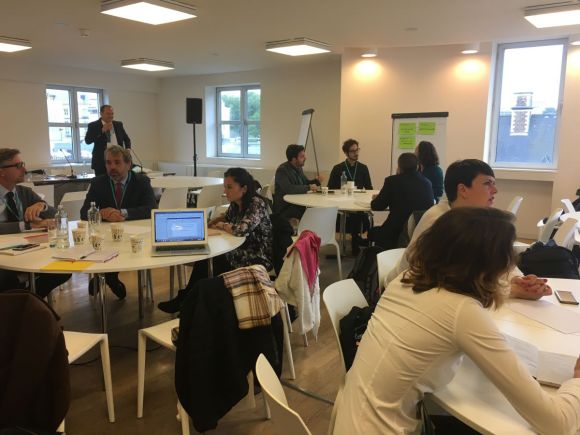
If there was a dictionary for the European Union tools and features you would find the following definition for “Cohesion Policy”: “The implementation of EU funded policies aiming to reduce regional disparities in the European Union affecting overall economic growth” and when looking on the same glossary for a concrete example of the aforesaid territorial differences, I’m confident you would bump into the Italian Mezzogiorno’s issue. Indeed, the striking social, economical and cultural divergences between the North and the South of Italy represent a textbook example of why cohesion policy is so deeply needed and how ESF is key in the overcoming of such discrepancies.
The Europartners’ participatory lab “The impact of the ESF on Italian Regions” held in the Square building in Brussels during the European Week of Regions and Cities aimed to tackle the above mentioned topic, gathering around the same table professionals directly involved in the regional policy mechanism - people representing DG REGIO/EMPL, the regional authorities, the Regional Technical Assistance etc.
The debate was based on the data of the D.E.E.P. tool, which basing on several specific indicators assigns a classification to an analyzed geographical area. The data gathered on the peninsula brought to the conclusion that most of the Italian regions should be classified as in a “Transition state”, showing an unstable socioeconomic situation. That let to the questions: “What has positively worked so far? What changes should occur? What future actions should be followed?”
A virtuous feature of the enactment of ESF local projects in Italy’s has undoubtedly emerged to be the positive effect of the collaboration on different institutional levels: most of EU funded projects in the peninsula show a holistic plan in which the public and private system, together with the tertiary sector collaborate in the building of a prosperous synergy. This, indeed, is key factor in the process of co-projecting the path of cohesion policy: a deep understanding of local needs and resources which results in rational investment on a regional level.
However, several speakers from the public sector pointed out the increasing difficulty in the use of funds for investments with both European and national importance. In answer to this, an enquiry on the “EUInvest” tool and its commitment in helping local realities to overcome the dependence on structural funds for ordinary needs was suggested.
Tuscany stood out as an example of socially profitable use of ESF as, there are several initiatives, committed to the generation of employment rather than employability. Indeed, throughout projects as “Giovani sì” or “Inclusione sociale”, the region has developed several training paths aimed to introduce young postgraduates, migrants and disabled to the workforce by providing them skills and competences, which are highly requested by the employers. Central and Southern Regions in Italy see Tuscany as a model for the objectives for the next years, mainly focusing on the acceleration of the bureaucracy and institutional machine which has slowed down the development of “Mezzogiorno”’s territories.
In clonclusion, to improve the knowledge of ESF policy across Italian regional and national institutions formative training workshops have then been proposed as a way to endow functionaries with tools to overcome the aforesaid slow work of the bureaucratic machine. In addition to this, Italian citizens are likely to change their point of view on European funded projects with the help of a well organized communication path, which should be next on the agenda. Past implemented projects’ achievements and future goals of brand new missions’ need to be highly advertised to local and wider communities to overcome the obscurity veil that had been laid on European’s cohesion policy in Italian Regions.
Written by: Francesca Sofia Fumagalli (Italy)
Edited by: Iskra Tsankova (Bulgaria)



